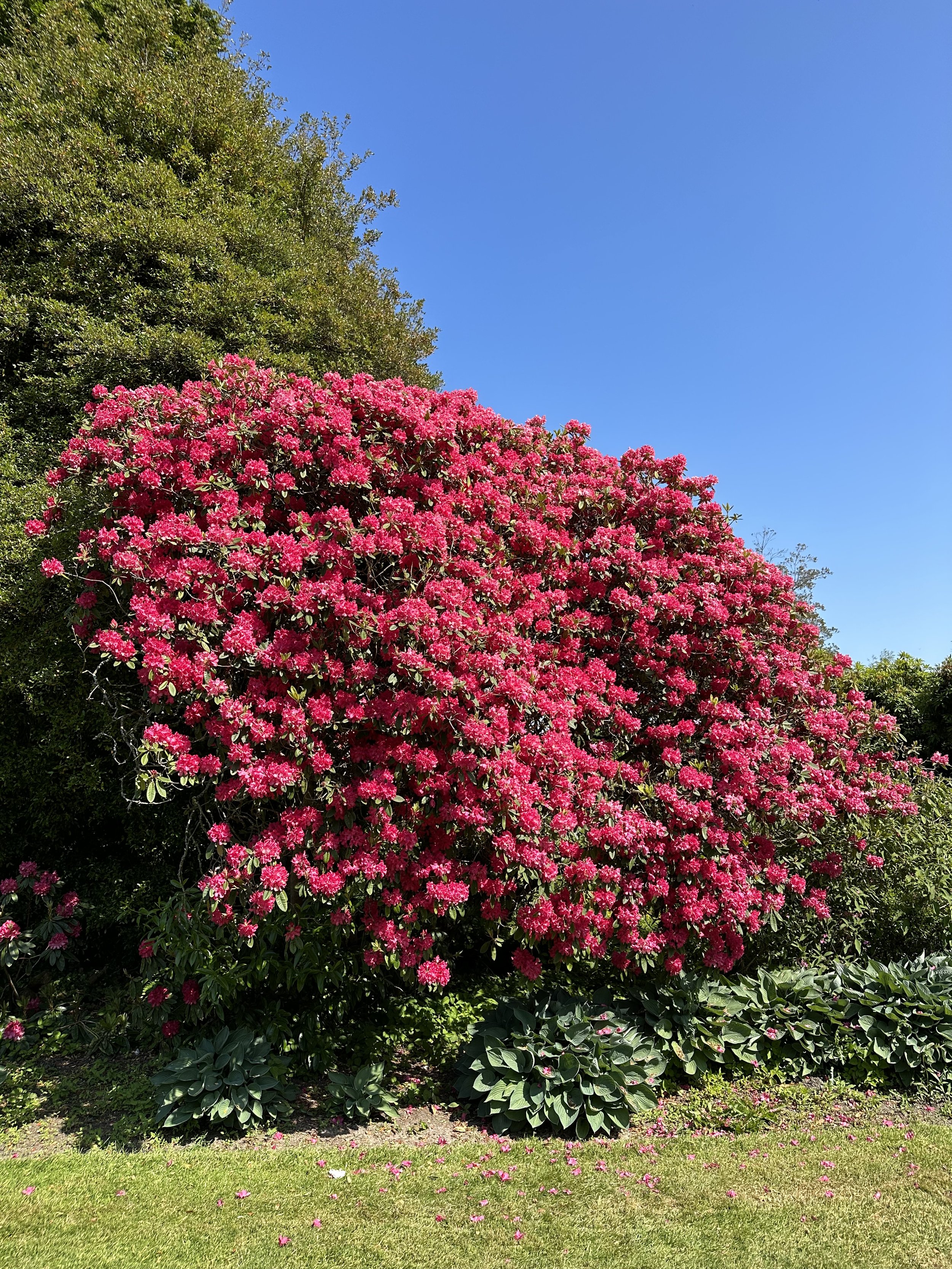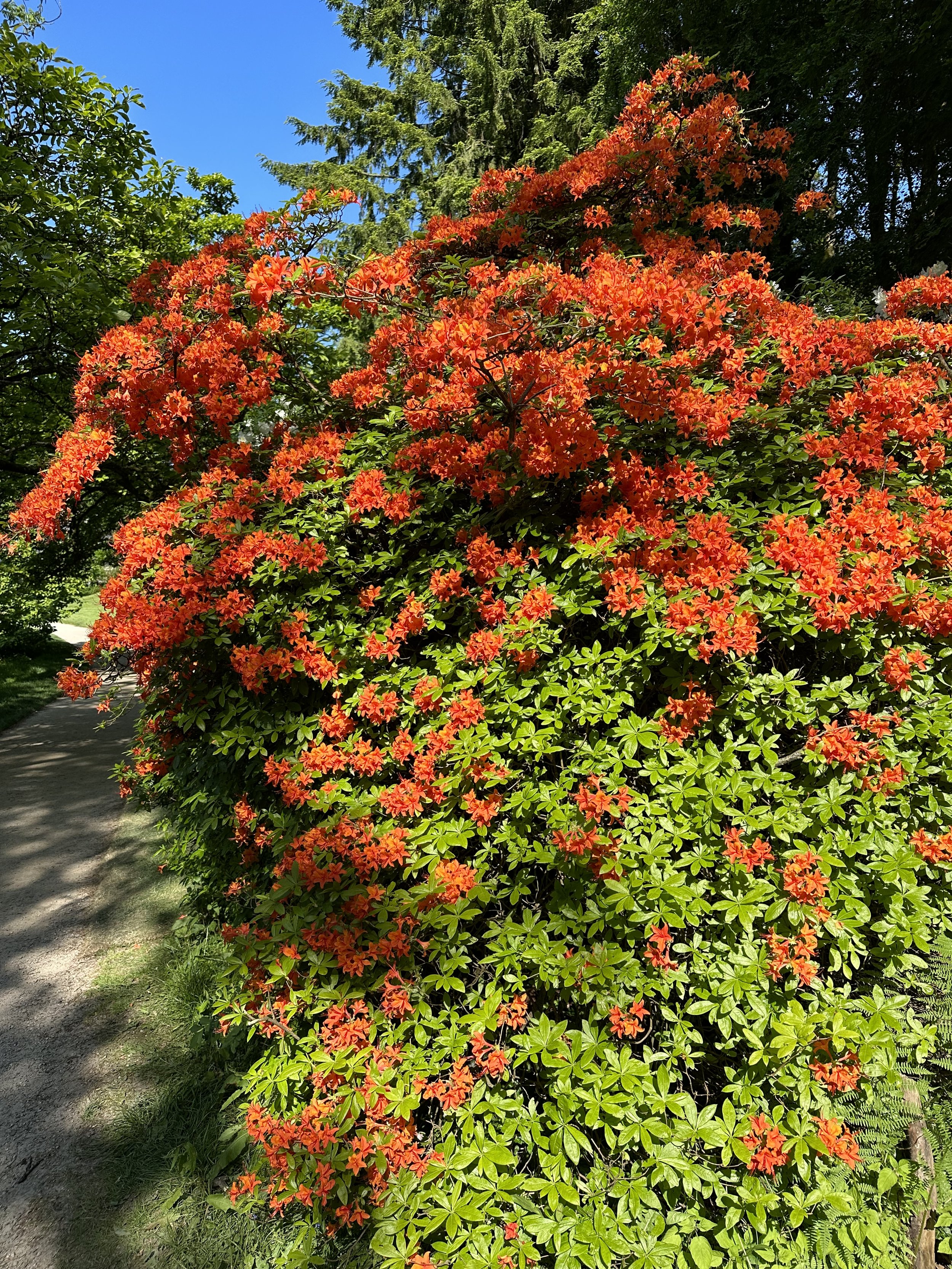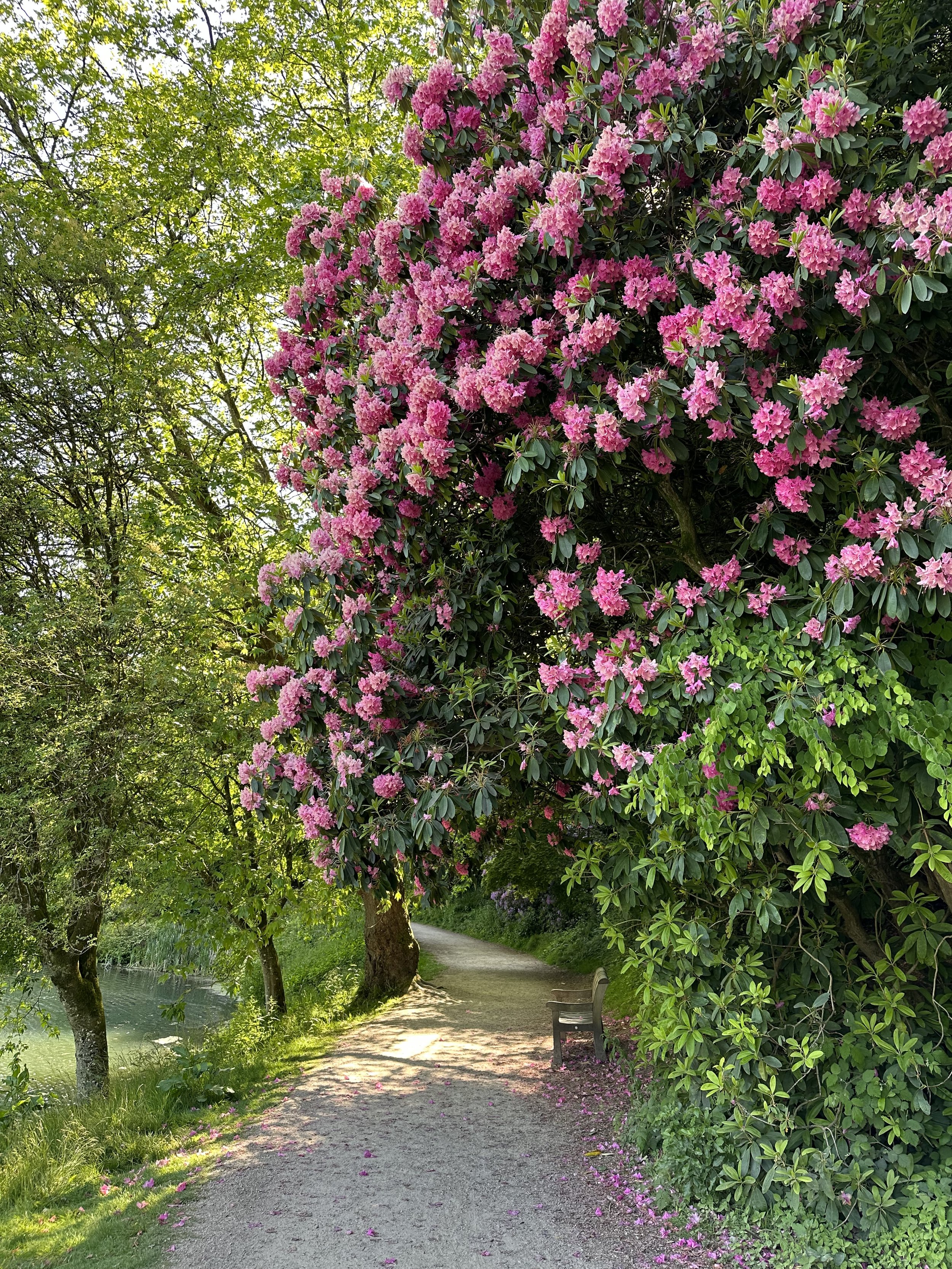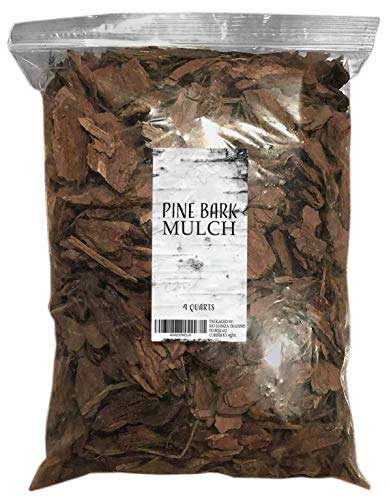Rhododendron vs Azalea: How to Spot the Difference
This article has links to products that I may make commission from.
As spring unfurls across gardens, two floral gems command the spotlight with their dazzling displays of color – the rhododendron and the azalea.
Often nestled side by side in garden centers, these botanical cousins share family ties within the genus Rhododendron, yet each has its own distinct story.
Gardeners are often puzzled by the rhododendron vs azalea debate, seeking to uncover the subtle cues and distinct traits that define these two plant types.
Questions range from the simplest – “Is an azalea just a type of rhododendron?” to the more complex considerations of care, size, and bloom time that influence their gardening choices.
In this guide, we’ll navigate through the layers of leaves and petals to discern the true essence of these popular shrubs.
We will tap into the expert insights of the American Rhododendron Society, unravel the secrets to thriving acidic soil gardens, and sprinkle in essential gardening tips that promise to elevate your landscape.
Whether you love evergreen azaleas or the stunning rhododendron bushes, prepare to gain the knowledge that will transform your garden into a vision of bell-shaped flower bliss.
Let's begin by exploring the nuances and variety between rhododendron vs azalea.
To learn more about growing rhododendron, check out my guide:
The short answer to Rhododendron vs Azalea:
Rhododendrons and azaleas are both members of the Rhododendron genus, but they differ in a few key aspects.
Azaleas are generally smaller plants with funnel-shaped flowers and can be deciduous or evergreen, featuring typically one stamen per lobe.
Rhododendrons, on the other hand, tend to be larger, with bell-shaped flowers and thick, leathery leaves, and they usually have ten or more stamens.
While azaleas often prefer more sun and can tolerate less acidic soils, rhododendrons typically need more shade and highly acidic soil conditions to thrive.
Stourhead garden in Somerset, England. An incredible place to see both rhododendron and azaleas in all their glory.
Here are the cultivars I recommend growing:
Azalea ‘Autumn Royalty’ evergreen w/purple flowers:
Rhododendron ‘Elite’ evergreen w/purple flowers:
The Genus Rhododendron: A Family Affair
The genus Rhododendron is a vast family of plants that encompasses both rhododendrons and azaleas, boasting over 1,000 species which span across various continents.
This diversity makes them a staple in gardens worldwide, appreciated for their wide array of colors, sizes, and shapes.
The American Rhododendron Society, a community dedicated to promoting the culture and development of rhododendrons, recognizes this genus as one of the most complex and varied in the plant kingdom.
Rhododendron Flowers: A Spectrum of Beauty
Rhododendron flowers are the genus's crowning glory, with their trademark bell-shaped flowers.
These flowers come in clusters known as trusses, making a dramatic display of color when they bloom.
From the delicate pastels to the deep, vivid tones, rhododendron flowers can transform any garden into a spectacular show.
The variety doesn’t stop at color; the shape of rhododendron flowers can range from the traditional bell-shaped to tubular or even star-shaped flowers, giving gardeners countless options.
Foliage: More Than Just Greenery
The leaves of rhododendron plants are just as varied as their flowers.
Some species boast large, leathery leaves that can grow up to several inches long, while others, like the Japanese Rhododendron, present with smaller, more delicate foliage.
The evergreen varieties offer year-round interest with their persistent leaves, adding texture and color even when the flowers have faded.
Rhododendron in full bloom at Stourhead Gardens.
Azalea Flowers: A Subgenre of Splendor
Within the rhododendron family, azaleas have carved out their own niche.
While they share the same genus, Rhododendron, azaleas are typically distinguished by their deciduous nature—though evergreen azaleas do exist—and their more slender leaves.
Azalea flowers tend to be funnel-shaped and often present with two-toned colors and freckled petals, a delightful contrast to the uniform hues of many rhododendron flowers.
Cultivating Diversity
Rhododendrons and azaleas aren’t just limited to ornamental use; they are also excellent for functional gardening.
Some species serve well as natural screens or hedges, while dwarf azaleas make excellent ground cover.
In terms of environmental adaptability, this genus has members that can thrive in various conditions, from the full sun in a garden center’s display to the dappled shade of a woodland garden.
The soil used for these plants is another point of unity and distinction.
They all prefer acidic soil, yet the genus's wide variety allows gardeners to select species and varieties best suited to their soil conditions—whether it's the naturally acidic soil found in some regions or amended garden soils in others.
The rich variety within the genus Rhododendron makes it clear why these plants have fascinated gardeners and botanists for centuries.
Whether it's the robust rhododendron bushes that anchor a garden design or the profusion of azalea flowers that announce the arrival of spring, these plants have earned their beloved status.
For more inspiration check out my guide:
Azalea in full bloom at Stourhead Gardens.
Distinguishing Rhododendrons from Azaleas
While the rhododendron genus is a broad canopy sheltering both rhododendrons and azaleas, there are distinguishing features that gardeners can use to tell these plants apart.
Understanding these differences is not just a matter of botanical curiosity—it can also guide gardeners in choosing the right plants for their landscapes and caring for them effectively.
Botanical Nuances
The most fundamental difference lies in their botanical classification.
Although both are part of the Rhododendron genus, azaleas can be classified into two subgenera: the true rhododendrons and the azaleodendrons (the azaleas).
This differentiation is based on several morphological features:
Stamen Count:
A key difference is the number of stamens or male parts of the flower.
True rhododendrons usually have ten or more stamens, while azaleas commonly have five stamens.
Flower Structure:
Rhododendron flowers typically boast a bell-shaped profile, whereas azalea flowers are often more funnel-shaped or tubular and may display a wider range of patterns, including streaks and speckles.
Plant Structure:
Rhododendrons generally have larger, thicker leaves that are evergreen, contributing to a bushier appearance.
In contrast, azaleas can be deciduous or evergreen, with the deciduous varieties shedding their leaves in the fall, leading to a more open plant structure during winter.
Size Variability:
Rhododendrons can grow into sizeable shrubs or even trees, as with the Rhododendron arboreum.
Azaleas are typically more modest in size, which often makes them suitable for smaller gardens or as underplantings in larger landscapes.
Growth Habits and Garden Roles
Rhododendrons and azaleas also differ in their preferred growing conditions and the roles they play in garden designs:
Sun Tolerance:
Azaleas are generally more tolerant of full sun, provided they have adequate moisture, making them versatile for various garden spots.
Rhododendrons prefer filtered light or partial shade, avoiding the harsh afternoon sun.
Soil Preferences:
Both love acidic soil but may require different amendments and pH levels to reach their full potential.
Use in Landscaping:
Due to their larger size, rhododendrons are often used as background plants or privacy hedges.
Azaleas, with their smaller stature and bountiful spring flowers, are popular choices for borders, container plantings, and splashes of color in perennial beds.
Bloom Time and Longevity
Bloom Time:
Azaleas are known for their springtime display, often being one of the first shrubs to bloom.
Rhododendrons generally bloom from late winter through early summer, with their peak season slightly later than azaleas, depending on the variety.
Longevity of Blooms:
Azaleas tend to have a more concentrated bloom period, while rhododendrons can have a prolonged bloom time, with different species blooming sequentially throughout the growing season.
Pruning and Maintenance
Pruning:
Rhododendrons typically require less pruning than azaleas. When rhododendrons do need pruning, it’s generally to remove dead wood or to shape the plant.
Azaleas, particularly the deciduous types, might benefit from more regular pruning to encourage bushiness and remove any stray or dead branches.
Maintenance Needs:
While both plants have similar needs regarding water and fertilizer, rhododendrons may require more attention to prevent issues like root rot and pests due to their larger leaf area and denser growth.
For more tips, check out my guide:
Stunning pink rhododendron at Stourhead Gardens
Rhododendron and Azalea Growing Tips
Whether you’re drawn to the stately rhododendron or the charming azalea, successful cultivation of these plants can add exceptional beauty to your garden for years to come.
Here is how to help these plants thrive.
Also, check out my guide: How to Propagate Rhododendrons Successfully.
Soil Preparation and Planting
Acidic Soil:
Both rhododendrons and azaleas flourish in well-draining, acidic soil with a pH between 4.5 and 6.0.
Before planting, it's advisable to perform a soil test and amend the soil with sulfur or organic matter like pine needles to achieve the desired acidity.
Here is the soil pH test kit I recommend using:
Planting Depth:
When planting, ensure the root ball is slightly above the soil line to prevent water from accumulating around the stem, which can cause rot.
Planting in raised beds can also improve drainage and prevent root issues.
Watering and Mulching
Consistent Moisture:
These plants prefer moist soil, but it's crucial to avoid overwatering.
Implementing a consistent watering schedule during dry periods, especially in the first few years after planting, can promote a strong root system.
For this you can use rainwater collected from a water butt.
Mulching:
Apply a layer of organic mulch around the base of the plants to retain moisture, regulate soil temperature, and reduce weed competition.
Pine bark, wood chips, or leaf mold are excellent choices that also complement the soil's acidity.
Here is the pine bark mulch I recommend for rhododendrons and azaleas:
Sunlight and Shade
Sun Exposure:
While some rhododendron and azalea varieties can tolerate full sun, most prefer partial shade.
Morning sun with afternoon shade or dappled sunlight is ideal to protect the leaves from scorch and ensure vibrant blooms.
Rhododendrons and azaleas work perfectly in north west, south east, and east facing gardens.
Shade Tolerance:
If you have a heavily shaded garden, look for shade-tolerant species.
Be aware that too much shade can lead to sparse flowering.
Adjusting plant placement or pruning overhead trees may be necessary for optimal performance.
Fertilizing and Pruning
Fertilizing:
Feed your rhododendrons and azaleas in early spring with a slow-release, acid-forming fertilizer designed for acid-loving plants.
Be careful not to over-fertilize, as this can damage the plants.
This is the best fertilizer for rhododendrons and azaleas:
Pruning:
Pruning should be done immediately after flowering to avoid cutting off next year's buds.
Remove dead or diseased wood and thin out dense areas to increase air circulation, which can reduce the risk of fungal diseases.
Here are the best pruning shears for the job:
Special Considerations
Deer Resistance:
While no plant is entirely deer-proof, both rhododendrons and azaleas are generally not deer favorites.
However, if deer pressure is high in your area, consider deer-resistant varieties or implement physical barriers or repellents.
Toxicity:
All parts of rhododendrons and azaleas are toxic if ingested. Keep this in mind if you have curious pets or children.
By following these gardening tips, you'll be well on your way to cultivating a healthy and vibrant garden featuring the lush foliage and stunning blooms of rhododendrons and azaleas.
Remember, the key to successful gardening with these species lies in understanding their specific needs and creating the right environment for them to flourish.
Equip your urban green space with my recommend top tier tools.
Purple rhododendron in full bloom.
FAQs
Which is easier to grow, azaleas or rhododendrons?
Both can be relatively easy to grow with the right conditions, but azaleas are often seen as less demanding, especially the deciduous varieties that are more tolerant of various conditions and are often more adaptable to different soils and sun exposures.
How do I make my soil more acidic for rhododendrons and azaleas?
You can lower the pH of your soil by adding sulfur or organic matter such as composted leaves, or pine needles.
Regularly mulching with these materials can also help maintain the necessary acidity over time.
Here is the organic soil acidifier I recommend:
Are rhododendron and azalea plants poisonous?
Yes, all parts of rhododendrons and azaleas contain toxic compounds that can be harmful if ingested by humans or animals.
When is the best time to plant rhododendrons and azaleas?
The best time is during the cooler parts of the year, in fall or early spring, to allow the plants to establish roots without the stress of high heat.
Can I plant azaleas and rhododendrons together?
Yes, you can plant them together as they have similar soil and light requirements.
They can complement each other well in a garden design, with azaleas offering ground cover and lower layers, while rhododendrons provide height and a backdrop.
Pink rhododendron in full bloom.










































